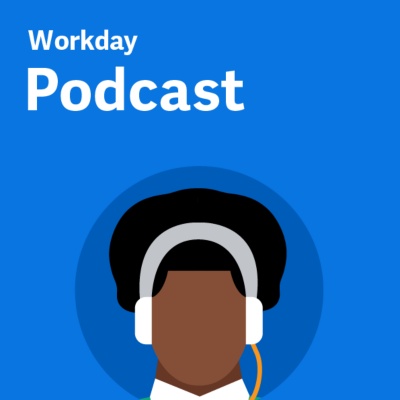The last few years amounted to perhaps the biggest stress test government agencies have ever faced. As crises so often do, the COVID-19 pandemic sparked urgent and necessary changes.
Federal agencies raced to digitize public services while also rolling out remote work solutions for workers. Digital solutions promised efficiency, flexibility, and resiliency, and the day of reckoning for costly legacy IT systems was finally at hand. The goal: Transformation efforts would push the government into the future.
That was the dream, at least—but it only partly came true. Many agencies did press forward with transformation projects, some supported by an unprecedented $1 billion in funding for the Technology Modernization Fund tucked into the American Rescue Plan, for example.
But rapid change is a very tall order for the federal government, a massive, complex entity that employs more than 4 million people. And progress has slowed of late in the public sector.
Workday’s survey of government executives found that a majority (55%) of leaders saw the pace of digital transformation slow last year, or they expect it to slow down in the future. Just 9% of government leaders reported that the majority of their daily operations are digitized—half the rate across all sectors surveyed.
Deep digital change is a tough road to walk, says Rowan Miranda, senior managing partner for government strategy at Workday. “Governments are taking the seemingly easier route of investing lesser amounts by upgrading and patching legacy systems just to get by for now.”
But those legacy systems, which suck up a huge portion of the U.S. government’s total IT spending, are likely to become even bigger pain points in the coming years as the need for resiliency and flexibility rises in tandem with citizens’ digital expectations. Modern, cloud-based systems are also poised to help agencies evolve on the talent front. An aging workforce needs to be replaced—ideally while meeting diversity and equity targets.
Those are some of the trends that will have the biggest impacts on the federal government in the coming years. What follows are insights from experts inside and outside government, highlighting five critical focus areas, as federal leaders eye the horizon.
1. AI and ML Helps With Workforce Planning
According to the U.S. Office of Personnel Management (OPM), nearly 28% of federal employees will become eligible for retirement within five years. (For senior leadership positions, the timeline is even shorter, with nearly two-thirds able to retire by the end of 2023.)
Faced with an urgent need to meet future workforce needs, federal agencies clearly have their work cut out for them—and not only because the private sector has long snapped up some of the best talent. Saddled with manual processes and fragmented systems, federal agencies can be painfully slow to hire. It takes on average 100 days to fill jobs, roughly three times as long as in the private sector.
That’s not a good first look for millennial and Gen Z applicants, who “expect to enter the hiring queue quickly and move through it seamlessly, whether they’re applying to jobs on their phones or using chatbots to check the status of their application,” says Wayne Bobby, vice president, federal government, Workday.
To the extent agencies can modernize their hiring systems by leveling up to approaches powered by cloud-based artificial intelligence (AI) and machine learning (ML), common in the private sector, they can gain advantage against the competition. “Cloud-based tools speed the application process and create an immediate relationship with applicants so they feel valued—and so they don’t assume that they threw their resume into a void,” Bobby says.
If federal organizations can get human resources (HR) systems in place that enable rapid connections with promising candidates and highlight the career path ahead, their core value proposition—meaningful work—is more likely to reel in top talent.
2. Legacy Systems Become Too Painful to Ignore
Here’s an unsettling statistic: Just 10 federal IT legacy systems—some as old as 50 years!—cost American taxpayers roughly $337 million annually, and agencies must typically earmark about 80% of their IT spend for operations and maintenance of existing infrastructure, including legacy systems.
Sticking with a rickety status quo will only get more costly. In January, many travelers experienced that firsthand, when a damaged database file in a U.S. Federal Aviation Administration legacy system caused a 90-minute stoppage to all takeoffs, the first national grounding of U.S. flights in more than two decades. It was a reminder of the federal government’s massive technology debt, much of it centered on back-end systems. Those old systems are becoming obstacles.
“The need to act on technology advancement is widely acknowledged by public service leaders,” says Ryan Gaetz, managing director, global education and government lead, Accenture. “Service of the mission is priority one and most legacy systems simply aren’t up to the task.”
Patching old systems to just keep the lights on also exacts big opportunity costs. Nearly two-thirds (59%) of government leaders say their inability to connect operational, people, and financial data to business outcomes harms the organization’s agility, according to a Workday survey. The most important factor in improving real-time decision-making? The ability to integrate data between disparate systems, say 80% of leaders.
The pain points around data integration and access extend to HR. More than half (57%) of federal government HR and IT workers describe their human capital management systems as fragmented, according to a 2022 Workday Emerging Technology Survey. Fifty-six percent describe their ease of data access as below average or poor.
The longer government organizations wait to rip the bandage off and modernize core systems, the longer they’ll be shortchanging the value of their own data—to their own workforce and the public these agencies serve.
“The main risk of deferring digital transformation is resources being spent on overhead activities rather than on citizen services,” Miranda says. “Then there’s the difficulty retaining government staff who are accustomed to modern technology tools in their everyday lives and will seek out alternative employers that use them.”
3. Agencies Rethink How Technology Investments Get Made
The case for change is clear—but that doesn’t mean any change is an improvement. Some agencies, eager to lean in to the future, invest in so-called upgrades by moving existing enterprise resource planning (ERP) systems to the cloud. This strategy just shifts IT costs from one area to another without addressing key obstacles.
“Agencies that move away from applications that hinder communication and cooperation to more open, standards-based IT ecosystems see two big benefits, according to our Accenture research,” says Gaetz. “Firstly, they are much more likely to see high levels of citizen satisfaction with government services (54% vs. 26%). Secondly, they are better able to access and use reliable, real-time data to form insights and drive business change (95% vs. 53%).”
In order to invest in IT systems that are built to easily adapt and grow as the future unfolds, federal agencies would be wise to rethink their request for proposal (RFP) process when replacing legacy systems. It’s imperative for public-sector leaders to find a technology solution that can do more than meet today’s specific needs.
That means going beyond a standard one-size-fits-all RFP to a more tailored and hands-on approach that encompasses pre-RFP demos, customer references, and test drives by the people in the organization who will actually use the software.
Evaluation team members should walk away from a demo with a clear understanding of how a vendor’s proposed solution will address major pain points and challenges. How exactly will it empower financial planning and analysis specialists to make better, faster financial decisions, for instance? How exactly does the solution use AI and ML—and what does this mean for an agency’s workforce?
Although digital investments can often be invisible to constituents, they are now at the core of federal organizations’ ability to serve the public better. “Digital tools are drivers of efficiency, operational excellence, and citizen satisfaction with services,” Miranda says.
All those benefits are mission critical. The last one—citizen satisfaction—is a moving target in a world of rising digital expectations, underscoring the value of flexible and adaptable cloud-native solutions. Agencies should assume constituents will keep pressuring governments indefinitely to deliver more expedient and digital-focused services.
Marina Nitze, former CTO of the U.S. Department of Veterans Affairs, saw up close how bureaucracy can slow down digital transformation efforts, so leaders must keep pushing against the organizational current to enact changes that meet citizens’ digital needs.
“I expect in today’s world, most things will be instantaneous,” says Nitze. “And so the more that digital innovation can meet people where they are to provide those smooth or instantaneous interactions, the better.”
4. Data-Driven DEIA Targets Drive Progress, Build Trust
People of color make up about 40% of the U.S. population but less than one-quarter of the federal government’s senior executive service employees. That dissonance between senior leaders and the constituents they’re meant to reflect doesn’t take into consideration other diversity factors, such as gender, sexual orientation, and religious affiliations.
To better promote diversity, equity, inclusion, and accessibility (DEIA), the current administration has taken a data-driven approach, including an executive order requiring agencies to collect and analyze demographic data. Yet only 16% of federal HR and IT leaders say they’re very prepared to meet diversity goals in recruiting, according to a Workday Emerging Technology Survey. And only 13% of respondents said their agency conducted detailed tracking and reporting on the topic.
“To make a significant difference long term, the government must be willing to take a data-driven approach to DEIA,” says Dr. Gina Guillaume-Joseph, CTO of government at Workday. “Treat it the way we treat any other business question: gather data, establish metrics to set baselines and measure progress, and keep trying strategies until we meet our goals.”
The need for agencies to know where they stand relative to DEIA is more urgent than ever. A unified data environment enabling real-time access to reliable workforce metrics powers that first, crucial step—but it also propels the agency forward in other ways.










